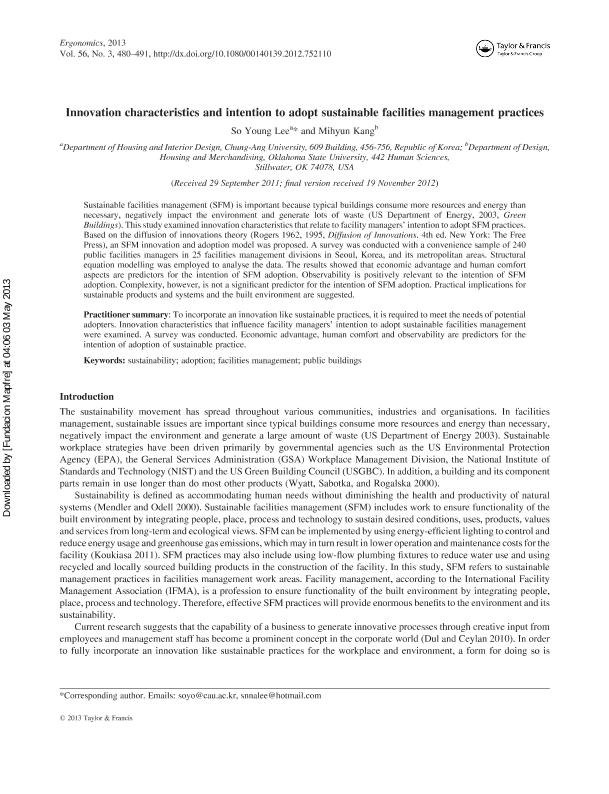Innovation characteristics and intention to adopt sustainable facilities management practices

Contenido multimedia no disponible por derechos de autor o por acceso restringido. Contacte con la institución para más información.
| Tag | 1 | 2 | Value |
|---|---|---|---|
| LDR | 00000cab a2200000 4500 | ||
| 001 | MAP20130014449 | ||
| 003 | MAP | ||
| 005 | 20130506123042.0 | ||
| 008 | 130503e20130304esp|||p |0|||b|spa d | ||
| 040 | $aMAP$bspa$dMAP | ||
| 084 | $a875 | ||
| 100 | 1 | $0MAPA20130005614$aLee, So Young | |
| 245 | 1 | 0 | $aInnovation characteristics and intention to adopt sustainable facilities management practices$cSo Young Lee, Mihyun Kang |
| 520 | $aSustainable facilities management (SFM) is important because typical buildings consume more resources and energy than necessary, negatively impact the environment and generate lots of waste (US Department of Energy, 2003, Green Buildings). This study examined innovation characteristics that relate to facility managers' intention to adopt SFM practices. Based on the diffusion of innovations theory (Rogers 1962, 1995, Diffusion of Innovations. 4th ed. New York: The Free Press), an SFM innovation and adoption model was proposed. A survey was conducted with a convenience sample of 240 public facilities managers in 25 facilities management divisions in Seoul, Korea, and its metropolitan areas. Structural equation modelling was employed to analyse the data. The results showed that economic advantage and human comfort aspects are predictors for the intention of SFM adoption. Observability is positively relevant to the intention of SFM adoption. Complexity, however, is not a significant predictor for the intention of SFM adoption. Practical implications for sustainable products and systems and the built environment are suggested. | ||
| 773 | 0 | $wMAP20100019818$tErgonomics : the international journal of research and practice in human factors and ergonomics$dOxon [United Kingdom] : Taylor & Francis, 2010-$x0014-0139$g04/03/2013 Volumen 56 Número 3 - marzo 2013 , p. 480-491 |

